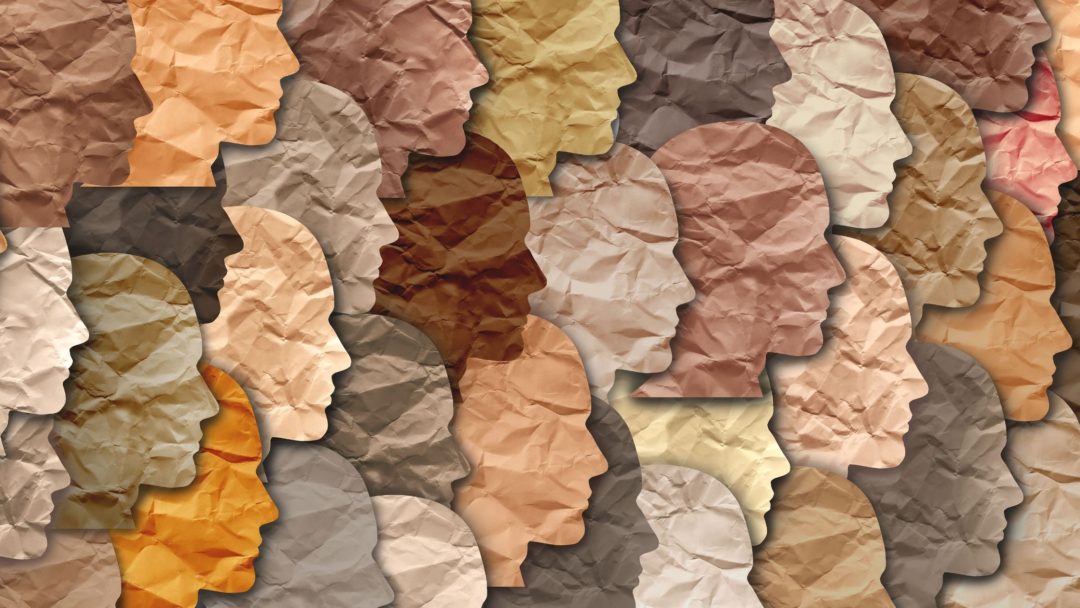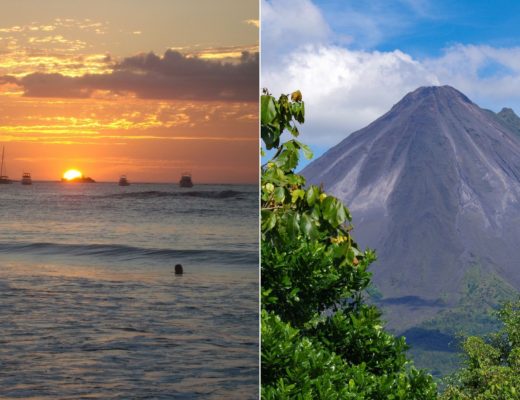Life is a Journey of Escapes is reader-supported. When you buy through links on our site, we may earn an affiliate commission. Learn more
Black History Month allows everyone to have the perfect time to recapture the Black diaspora’s deepest cultural roots. There are African people of descent around the world.
So, if you’re a woman over 50 thinking of a way to celebrate Black History for yourself, consider planning to visit one of these landmarks. This is only a small selection from the hundreds of locations where adventurers can travel and learn about African American History. Keep reading to learn more!
Great Locations to Travel
1. Studio Museum, Harlem, New York
Harlem’s Studio Museum is a center for artists of African descent from local to international. The works there have been heavily influenced and inspired by Black culture. So, it’s the perfect site for the dynamic exchange of concepts about society and art.
In addition, it houses traveling exhibitions and permanent collections that highlight African American and African culture, identity, and history. The museum also hosts several live and online events online for the community and a program for the artists in residence.
2. First Landing State Park, Virginia Beach, Virginia
The First Landing State Park was built in 1933-1940 in part by the African-American Civilian Conservation Corps and is included in the National Register of Historic Places. It’s the urban Virginia beach oasis since it is the most visited state park.
Additionally, the park also offers countless educational and recreational activities with many habitats like lagoons, maritime forests, rare wildlife and plants, and bald cypress swamps. Another distinction in the place is the botanical area where temperate and subtropical plants are found blooming together.
3. National Museum of African American Music, Nashville, Tennessee
The National Museum of African American Music is located at Fifth + Broadway in Downtown Nashville. It showcases the musical genres influenced, created, and inspired by African-Americans.
This museum allows an opportunity for many people to preserve and honor the innumerable and vast contributions that the African American community has imparted to the music industry. Also, it provides a way to commemorate the African Americans’ central role in shaping American music.
The first and only existing United States museum of its kind, this place shares the American soundtrack story by integrating interactive technology and history to honor the past and present Black musical heroes.
4. Barr’s Bay Park, Bermuda
Barr’s Bay Park is situated on the waterfront just off of Front St. It holds historical importance and breathtaking views lying at the Harbor Road and Hamilton Harbor water edge. There is a “We Arrive” statue built by Chesley Trott to remember the arrival of 72 people on 1835’s slave ship enterprise. The enslaved children, men, and women attained their freedom when they settled in Bermuda.
You can stay around the water edge and on the manicured lawns. This park is great for a peaceful picnic with views of the nearby yacht club’s yachting marina. Also, the park is a short walking distance from the Hamilton Ferry Terminal’s marine transportation hub and lies nestled on the lower Western end to the city’s heart.
The Tucker House Museum is a 30-minutes drive away from the Park. Here, you will discover Joseph Hayne Rainey, who got his freedom, sailed to Bermuda, opened a barbershop, and became the first African American United States House of Representatives member 5 times.
5. Negro Leagues Baseball Museum, Kansas City, Missouri
Kansas City’s Negro Leagues Baseball Museum was founded in 1990 and is dedicated to celebrating and preserving African-American baseball’s impact and history on America’s social advancement. Hundreds of historical artifacts, interactive computer stations, and photographs are exhibited in the museum.
It became accessible to the public in 1991 in a small single-room office space to build a permanent facility that will pay the proper tribute to the most respected baseball heroes in America. Under the leadership of John “Buck” O’Neil, it became a reality in November 1997.
This led to the museum welcoming more than two million visitors, making it one of the world’s most important cultural institutions for its contribution to making American baseball history known.
6. National Museum of African American History and Culture, Washington, D.C.
The only national museum devoted to documenting African American culture, life, and history is the National Museum of African American History and Culture. 2003’s Act of Congress established it and has collected over a hundred thousand individual members and 36,000 artifacts.
Actually, the sites you cannot miss are the Southern Railway Locomotive “1401” because the rail service had changed the country like letting the Yankees try out important things like the grits, the Greensboro Lunch Counter, Julia Child’s Kitchen, the Star-Spangled Banner, and Abraham Lincoln’s hat that he wore when got assassinated.
7. New Orleans Jazz National Historical Park
New Orleans is Jazz music’s birthplace, built on slavery’s bedrock. The city gained a distinction of embodying one the biggest populations for people of color in the eighteenth and nineteenth centuries, which was a time when slavery in North America was at its prime.
Enslaved people that were able to regain and bargain for their freedom or those who got their freedom after the Civil War consisted of people of color. They settled in New Orleans and formed their community in Tremé. They danced, started markets, sang, and played a style of music incorporating native African beats and Creole stylings that eventually morphed into jazz.
8. George Washington Carver Garden
This garden is named after George Washington Carver. He was a fearless innovator who always tried something new in his year. His broad knowledge of botany and soil helped him start an agricultural rebirth in the South, and experiments’ effects still echo current research. Carver’s contributions to agriculture, education, and botanical science stretch far beyond peanuts’ popularity.
The garden’s herbarium presents almost 3 dozen specimens gathered by him in Iowa from 1894 to 1897, with a voucher that provides information of when and where they were collected. It also stands a human-size statue of the garden’s namesake.
These are also proofs to honor Carver’s legacy as a figure of African American achievement. His living years were a testament to education’s power, even to those living in difficult situations.
9. Colonel Allensworth State Historic Park
This park is named after Colonel Allen Allensworth. He was born into slavery and became popular when he became the highest-ranking black officer in his years. He built a town named after him to operate as a self-governed and independent farming and ranching colony, with a church, bank, and school for people of color.
In California, Colonel Allensworth State Historic Park was the first state historical park for the American-African pioneers. The park’s advisory committee has audio recordings of 22 audio cassettes of public hearings, oral history reviews, and regional meetings with Allensworth’s townspeople.
Also, it provided a safe place for over 300 black families that were continuously controlled and oppressed under the Southern sharecropping system. It was designed to keep black people in the same plantations they worked on before the war started.
10. Boston’s Black Heritage Trail
The Black Heritage Trail allows 1.6 miles of walking tour to explore the history of Boston’s 19th century African American community who mainly lived on Beacon Hill’s northern slope. It is located at 46 Joy St. and offers free guided brochures and tours for self-guided explorations and is known to be the biggest collection of historic sites relating to the free Black community’s life before the Civil War started.
Also, the trail highlights the African Meeting House and the 54th Regiment Memorial.
Some of the historic sites included are the former churches, businesses, residences, and schools of the past thriving black community and other Underground Railroad stations where the enslaved people escaped and fled from the South for their freedom in Canada and the North.
11. Weeksville Heritage Center
The historic site of the Weeksville Heritage Center is located at Buffalo Avenue along St. Marks Avenue and Bergen Street in Crown Heights in New York City. It aims to preserve Weeksville, one of the first free black communities in America during the 19th century.
Also, the wood-clad houses along Brooklyn’s center Weeksville’s African-American community comprised hundreds of households and nearby schools and churches benevolent associations active in the large abolitionist movement.
Also, the place is a historic settlement of the nation’s significance and one of the withstanding historical pre-Civil War African-American community sites committed to preserving Black History on the ground where one of the nation’s oldest and largest free Black communities once flourished.
12. Beale Street Historic District
Beale Street runs from East Street to the Mississippi River and is one of the blues’ birthplaces declared by congress in 1977. Many musicians have frequented this place throughout the 1860s, the African American population’s commercial district.
You can explore and discover more of Blue’s history, the music style created by the Southern Black people shortly after the Civil War. Also, the Blues created were greatly influenced by field and work songs sung by enslaved people working on South plantations.
13. Buffalo Soldiers Memorial Park
Buffalo Soldiers Memorial Park is a public space funded by the public in memory and legacy of Americans of African descent military service. It honors the Infantry and Black Cavalry units that once served on the Texas frontier after the war between the states. The soldiers’ heroism has been feasted by musicians, military reenactors, filmmakers, and descendants wanting to preserve their legacy.
Visiting the park will let you see and explore the sculptures depicting sabers and stacked rifles by the sculptors of San Antonio, Bernice Williams, and James Hendricks, and a statue of a white buffalo. Buffalo was the nickname given to the African American cavalry regiments of the U.S. Army members.
Start planning your trip now!
This blog has everything if you’re looking for some amazing travel destinations to celebrate Black History Month. These 15 spots are must-visits for anyone who wants to learn more about the African American experience and culture. Each destination has its unique history and story to tell, a perfect treat for any woman over 50.
So, what are you waiting for? Pack your bags and get ready to explore some of the most fascinating places in the world.
Support the Team!
If we helped you plan your travels in any way and you want to support us, here are several companies we’re affiliated with. We receive a small commission at no extra cost to you when you click on the links below so feel free to click away! 🙂









No Comments